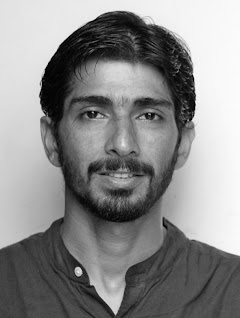Beat
Breaking news, daily life, sports
One Shot

“It was in Afghanistan and I was sitting in the front seat with Hamid, the Kabul bureau driver, driving past a bus. I looked back and saw this girl sitting very close to the front mirror, next to the driver, and the mirror was cracked. I just couldn’t stop myself and I shouted “Hamid, roll down the glass!” I picked up my camera and clicked three frames in the moving car. I am still very curious to know what she was thinking.”
Profile
When I was 11, I was a member of a mobile van library, and used to borrow comic books. Once I picked up a picture postcard book by the veteran Indian photographer S. Paul and that was when I began to be intrigued by photography. I never returned that book, but pestered my father to buy me a camera and I got my first one - a Yashica point and shoot film.
I never had any formal training in photography. I learnt most of it by trial and error and from the guidance of senior photographers in the field who scolded me and corrected my mistakes. I am still in the process of learning.
My first job was with a local newswire agency, and I was never issued with a full roll of film. Instead I was given leftover remaining films - usually 10 to 15 frames. I recall that on my first assignment I was given such a cut-film with 15 possible shots and I had to cover two assignments with it: an anti-government protest and a news conference called by a politician. I came back after covering both assignments and saved three frames. The good part of using left-over film was getting into the habit of being selective.
I haven’t covered conflict, but I feel my reflexes are best suited to these kinds of assignments. I also like shooting portraits.
I believe that in this business we don’t shoot to impress our fellow photographers, but to convey a story through our pictures to a general audience. I prefer to capture my subjects in a way that a layman can understand and relate to.
Like a billion Indians, I am a great cricket fan and once I got too engrossed watching cricket ace Tendulkar batting and took my eyes off the viewfinder. I ended up missing a great action picture. Since then, whenever I’m on an assignment, I watch everything through a viewfinder with a finger on the shutter button
Darwin’s theory of survival of fittest applies to today’s continuously evolving art of photography. In photojournalism, going beyond the visible and digging out a story from within a story is what’s required.
I advise all young visual journalists to do their homework thoroughly before taking on any assignment, as knowledge of the event and its history plays a vital role in getting the pictures that matter most.
The biggest lesson I have learnt is that you start connecting with people in a completely unique way with a camera in your hand.
Behind the Scenes


